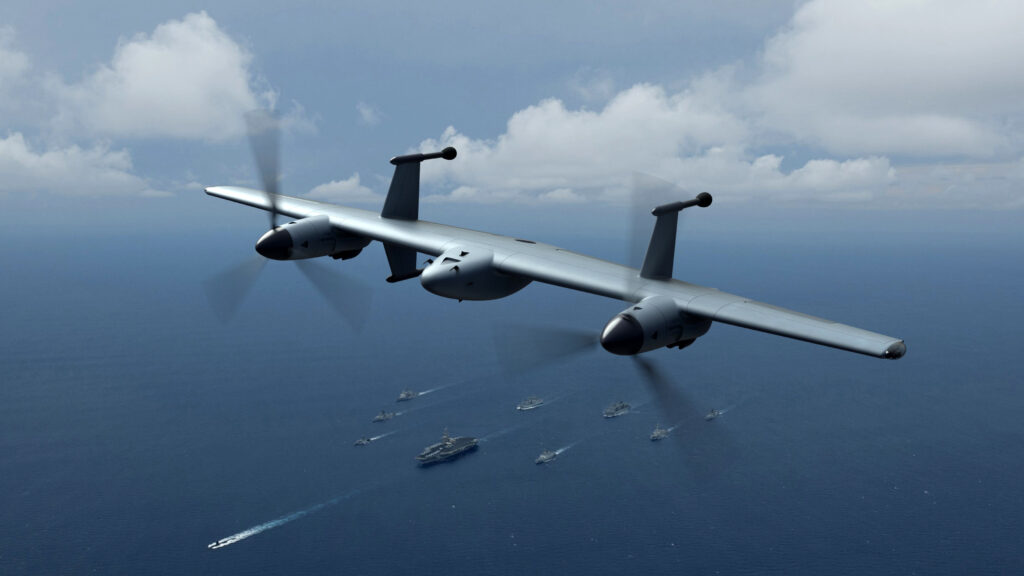The Defense Advanced Research Projects Agency (DARPA) of the US Department of Defense has selected six companies to develop an experimental lightweight drone capable of vertical takeoff and landing from ships.
DARPA chose major defense contractors as well as smaller aviation firms for its ancillary ANCILLARY program, also known as the Advanced Aircraft Infrastructure-Less Launch and Recovery program. AeroVironment, Griffon Aerospace, Karem Aircraft, Method Aeronautics, Northrop Grumman, and Sikorsky of Lockheed Martin will continue developing and refining their proposed designs.
DARPA aims for ANCILLARY to lead to the creation of a future drone that can be deployed and recovered from Navy ships without large mechanical launchers or landing and recovery equipment. According to DARPA, these drones could carry cargo, perform reconnaissance tasks, and track and target adversaries beyond the ship’s line of sight.
These small drones should be able to take off and land like helicopters from ship decks or uneven surfaces in most weather conditions and then perform missions like fixed-wing aircraft. They should also be capable of carrying significant payloads and flying long distances when necessary.
DARPA program manager Steve Komadina writes in his report that the goal of ANCILLARY is to increase the capabilities of small vertical takeoff and landing unmanned aerial systems (UAS) threefold compared to current state-of-the-art flight technologies.

He writes that innovative ways are being looked at to increase the payload weight, range, and endurance of small ship-launched UAS using new configurations, propulsion systems, and control methods while eliminating the need for special infrastructure.
As per Komadina, the Navy and Marine Corps will likely use this technology, but it could also benefit the Army, Air Force, Coast Guard, and US Special Operations Command.
In June 2023, DARPA selected nine companies to present their initial ANCILLARY concepts, then narrowed the list to six. These firms will now enter a 10-month phase to attempt to mitigate risks associated with their designs and conduct flight tests of their proposed aircraft elements. After this phase, the companies will present proposals to transition to the next stage, including manufacturing and flight tests.
According to DARPA, official flight tests of the entire design are expected to begin in early 2026.
In an interview, Christopher Harris, Northrop’s program manager, said that the company is incorporating its work on autonomous capabilities, vertical takeoff and landing, and long-lasting aircraft design into its project.
As of May 24, 2024, Harris stated that creating an aircraft that meets DARPA’s endurance requirements without the need for launch and recovery infrastructure is challenging.
Northrop’s aircraft can carry a payload of 27 kg and fly up to 185 km for 20 hours. According to Harris, Northrop’s ANCILLARY version will use a pair of lift rotors for takeoff and landing and another rotor for forward flight.
Harris stated that ANCILLARY can take off, land from a ship in rough sea conditions, and operate in a contested environment. It could assist with logistics by helping to offload ships and deliver cargo ashore.
On May 22, 2024, Sikorsky announced that it is conducting flight tests of its ANCILLARY version. The company describes its design as a “rotor-wing” that lands vertically on its tail, takes off like a helicopter, and then transitions to forward horizontal flight.
This design reduces wing drag during hover and transitions to forward flight, resulting in increased efficiency and endurance during cruise flight.
Igor Cherepinsky, director of Sikorsky Innovations, said flight tests are being conducted to ensure that the tail-sitter, blown-wing UAV can take off, land vertically with high stability, and efficiently fly on the wing.
Cherepinsky mentioned that the hinged rotor system in Sikorsky’s ANCILLARY version is similar to the rotor blades of a traditional helicopter, and the flight control system will use Lockheed’s autonomous MATRIX technology.
Sikorsky’s aircraft, currently undergoing flight tests, is powered by a battery, but if selected for further development, the company plans to build a 300-pound hybrid-electric version. According to the company, this aircraft will carry a 27 kg ISR payload.
In a statement, Method Aeronautics mentioned it is working on this project with Sierra Nevada Corp., which has expertise in landing systems, aircraft modification, and integration, and with Bechamo, a company specializing in using artificial intelligence for flight control systems.
According to Method’s statement, the company’s development offers a novel approach to providing effective and reliable vertical takeoff and landing capability for Group 3 UAVs. The company sees this program as a crucial technological development enabling broader use of vertical takeoff and landing UAVs by US forces abroad. It is actively working to accelerate development beyond the grant.
Group 3 drones weigh less than 600 kg and fly at speeds up to 460 km/h.
